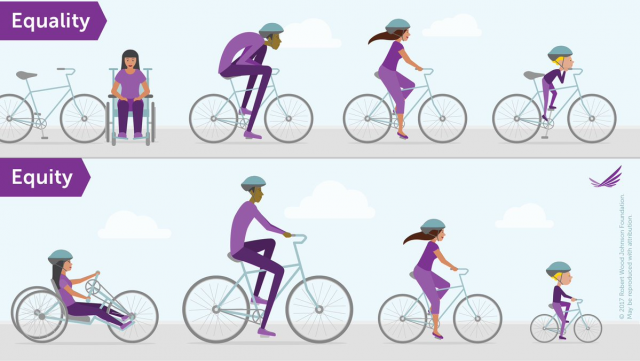“Imagine a gender-equal world. A world free of bias, stereotypes, and discrimination. A world that’s
diverse, equitable, and inclusive. A world where difference is valued and celebrated.”
International Women’s Day is today, and it marks 112 years since the first gathering of over a million
people in Austria, Denmark, Germany and Switzerland. For well over a century, the day has
represented a celebration of women’s social, cultural, political and economic achievements, and it is
known as a call to action for accelerating women’s equality.
This year’s International Women’s Day theme is Embrace Equity. It is the chance to focus on the
differences and understand how equality and equity are distinctive. Not to be mistaken as a
synonym for equality, using the word equity allows us to unpack what equality looks like in an
adjusted way.
When I first saw the word in the theme for 2023, I mistook it for equality. An easy error to make
when comparing the two, and after digging a little deeper and always being a stickler for particular
words used to describe impactful messages, I realised the significant differences between the two
needed an explanation.
Equality gives every individual access to the same resources and opportunities.
Equity differs from equality because it accounts for specific disadvantages and obstacles that certain
groups or individuals may experience while obtaining the same outcome.
When sharing the differences between the two with my family, I used the bicycle example shared on
the International Women’s Day website and will share it here. Imagine four people are given a bike –
that is equality. Amongst those four people, one woman is in a wheelchair; one male is over six foot
tall; one woman is of average height, and one is a child. Giving them all the same size and style of
bike is equality.
Let’s consider for a moment the practicality of this scenario. The person who uses a wheelchair
cannot use the bike, the tall male is hunched over, the woman of average height is comfortable and
the bike is perfect for her, and the child cannot reach the ground to ride safely.
Now if we consider equity in in this scenario and how this would look, the bike provided would see a
wheelchair-specific bike peddled by arms supplied, a taller bike for the male, the woman of average
height receives no change to her bicycle, and the child receives a much smaller bike. This is equity.
The image I’ve described is sourced from the Robert Wood Johnson Foundation.
In an attempt to really bring home the differences to my family, I explained the concept of heavy
lifting because it reminded me of a 4WD course I did where a tyre change needed to be
demonstrated as part of the competency assessment. A reasonable adjustment was made for me
because I don’t have the physical capability to change a 4WD tyre without help and assistance. I can
explain to someone how to do it and I can position jacks, but I cannot lift.
If two 20kg weights were put in front of my husband, Nathan, and me, and they both needed to be
moved to the exact location, this is equality because it is the same opportunity and circumstances.
Equity would look like one 20kg weight for Nathan and four smaller 5kg weights for me. The
opportunity is the same, but a reasonable adjustment is made to enable both outcomes to be
successful. Without this adjustment, I’d fail at the task.
The Embrace Equity theme encourages us to understand why equal opportunities aren’t enough and
why equitable action is required. Embracing Equity means levelling the playing field and
acknowledging that we don’t all start from the same place. Let’s Embrace Equity together and
recognise its importance as we forge towards an equal and inclusive world.
“Equality is giving everyone a shoe. Equity is giving everyone a shoe that fits.” – Susan K Gardner.
Dean, College of Education, Oregon State University.
Here’s to strong women. May we know them, may we be them, may we raise them. Happy
International Women’s Day!






